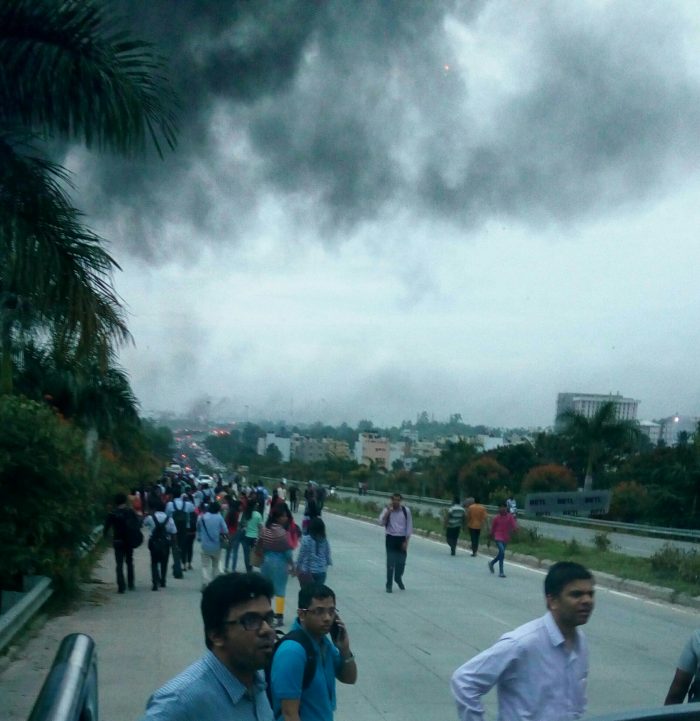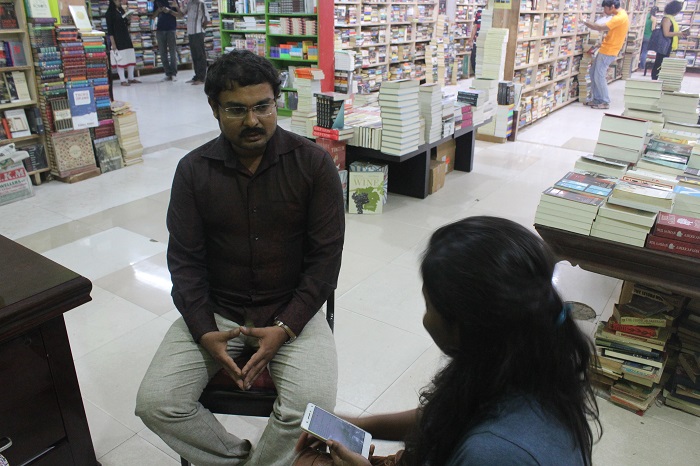I am a football illiterate. My vocabulary in football is limited to a mere goal, foul, Pele, Maradona, Messi, Ronaldo, Neymar and probably a few club names thanks to the newspapers I read. Not long ago, FC meant Food Court to me and not a Football Club. I have had friends and colleagues who used to swear that football isn’t a matter of life or death but something more than that. I could never comprehend the madness over it. I would laugh them off saying there are better things to fight and die for rather than chasing a ball into a net. In my defense, none of the football clubs had neither a Sachin Tendulkar nor a Rahul Dravid. Yet, when I travelled around Europe, I ended up taking stadium tours in Camp Nou, Santiago Bernabeu and Stamford Bridge because my friends loved football and I loved them. Just a walk through the stadiums listening to its stories was enough for me to be goose bumped. As I walked out of these stadiums, my respect for the game increased by manifolds. That was two years ago and that helped me add more words to my football vocabulary – Copa America, La Liga, UEFA and some more.
Fortunately for me I have this friend who says football is in his blood (sometimes I think there is only football and no blood) and wouldn’t rest until he contaminated mine too with football. So he sent me a birthday gift that read ‘Tiro – A football odyssey from Amazon to Alps’. A wicked move, I must say because he knew it was easier to make me read a book on football than get me to watch a football match. I fell partly for his trick and partly for the cover of the book. It looked beautiful in white and couldn’t let it get dusted in the book shelf.

Tiro is a collection of articles from goaldentimes.org, a renowned group of football story-tellers winning accolades all over the world. Hence the book has multiple authors and a diverse flavor to it too. The first impressive thing about the book is their ‘Line up’, where the ‘First Half’ of the book features 15 football stories from Latin America, the ‘Second half’ with another 15 stories but this time from Europe and then there is an ‘Extra time’ with 3 articles that has stories flowing across the continents. For an ardent football fan this would give the feel of a football match but for someone like me that was a very important first lesson. If not for Tiro, it would have taken me forever to learn that these regions have a very distinct and distinguished culture and history when it comes to football.
As the match began, the first half was terrific. There was a occasional drag towards the second half probably because some of the stories were a little too longer than the other ones, but the later part of the second half made up for it. And the extra time finished it just perfect. Every article carries an interesting short introduction of what is being covered in them that helps you decide whether or not to read it. However even if I was dozing off exhausted, reading these introductions through half droopy eyes would wake me up and let me finish the article. As for the articles, almost all of them are inspiring and engrossing stories knit very tactically and presented very poetically. I must say the GT boys are brilliant story tellers. I had to sneak out in between conversations with friends, during office hours and even during sleep to finish reading the stories that I had started. I wasn’t expecting to be hooked on to the book, but I was. And at times to YouTube too replaying few shots especially the ‘hand of god’ goal.
(I have replayed it so many times now and even different versions of it. Did he or did he not? This has been driving me mad. How do you people live with such suspense stories?)
The book starts from Brazil tracing down in detail the history of various footballing nations, their greatest victories, their biggest humiliations and their mighty come backs. It sings the glory of unsung heroes and paints the struggles of their lives. It makes you fall in love with those fallen stars and tells you why some deserved more than being forgiven. The book tells you how football has been an instrument of change bringing about a revolution in the political landscape of many of these countries and how footballers were not only sports icons but also champions of nationalist movements. I realize how ignorant I was to think of football as just a game of a ball and net with few mad men running around it while this ‘beautiful game’ has been the beacon of hope for multitudes across continents over generations. The stories of the lives that were saved by the game, the lives that were spared by the game, lives that were sacrificed for the game tells me why this not just a matter of life and death but a lot more than that. While the world is well aware of the wars on a football ground, Tiro also tells the world about the games fought on war fields with a knife hanging over their heads. And that is why Tiro is going be a very significant piece of sports literature not only for football aficionados but also for history enthusiasts across the globe.
Tiro has been a thoroughly enlightening, enriching and entertaining experience for me. I have just one thing to complain about at the cost of being called a lazy reader. But hey, how would you feel if you must switch television channels while watching a nail-biting match. That is how inconvenient it is to flip over the pages to read the chapter notes. It would have been wonderful had the chapter notes been added at the end of the page, especially for people who like me do need the help of chapter notes. I am still a football illiterate and will continue to blink when you say a quarter back or a 4-4-2 formation. Nevertheless, I have tremendously improved on my football vocabulary. I know what derby means. I know Alfred Di Stefano, Ruth Malosso and Barbosa. I know what a bicycle kick is. I even know some football chants. Finally, I know what Srinwantu Dey means when he says “Football is a palette of life which reflects all the emotions – joy, sorrow, grit, helplessness and determination”. And for that I am immensely grateful to my dear friend Aritra Biswas and the GT boys.

























